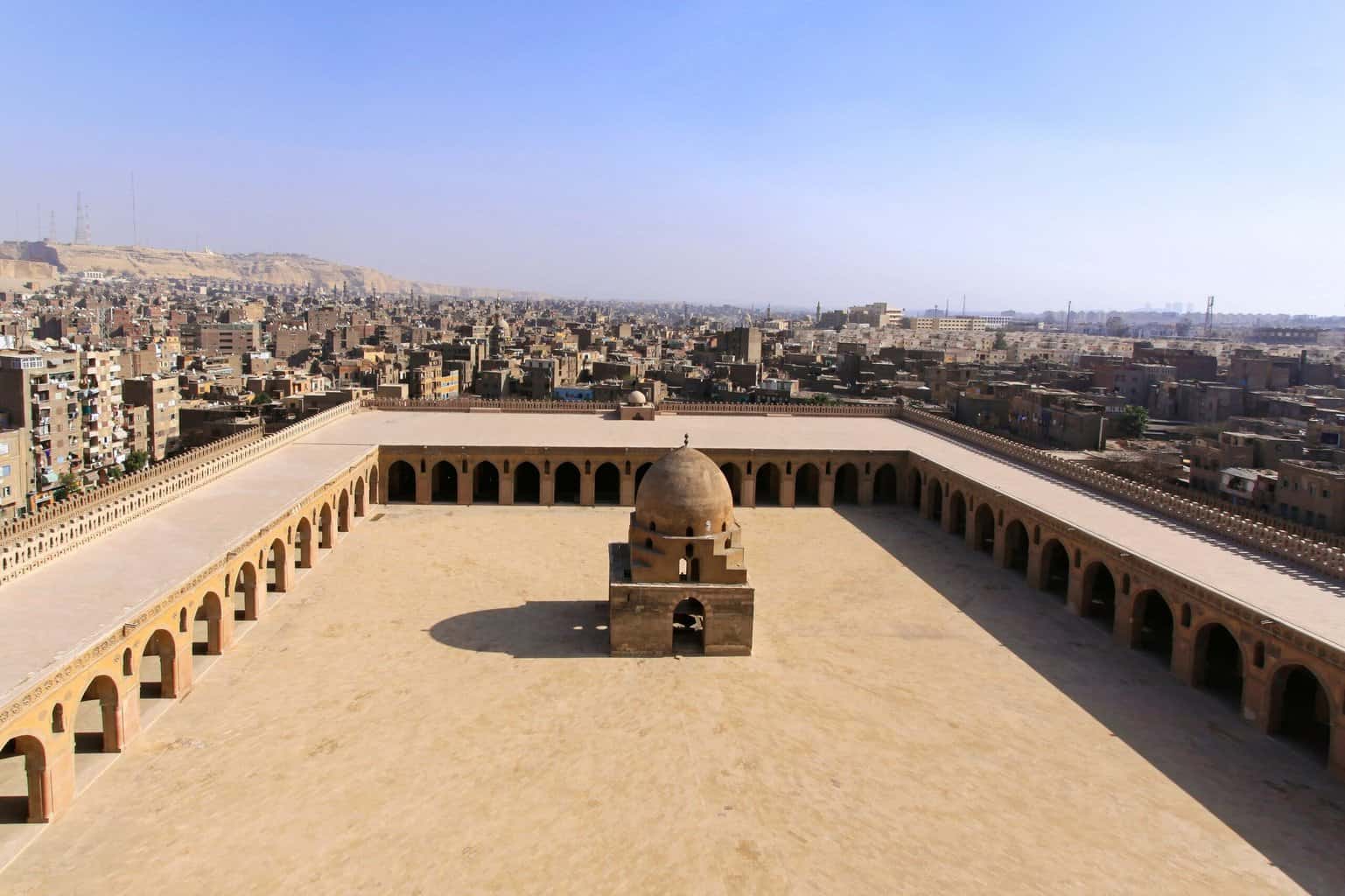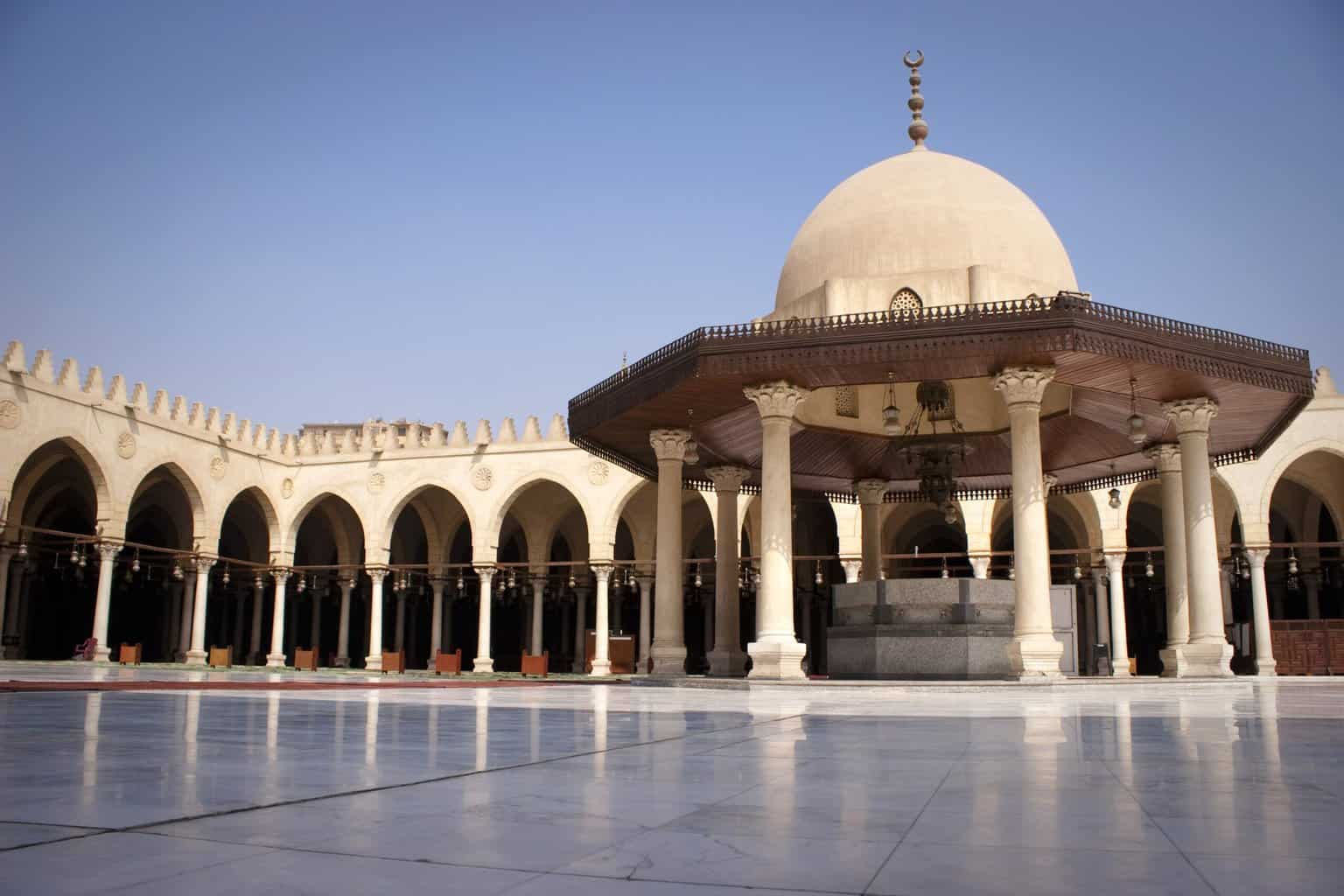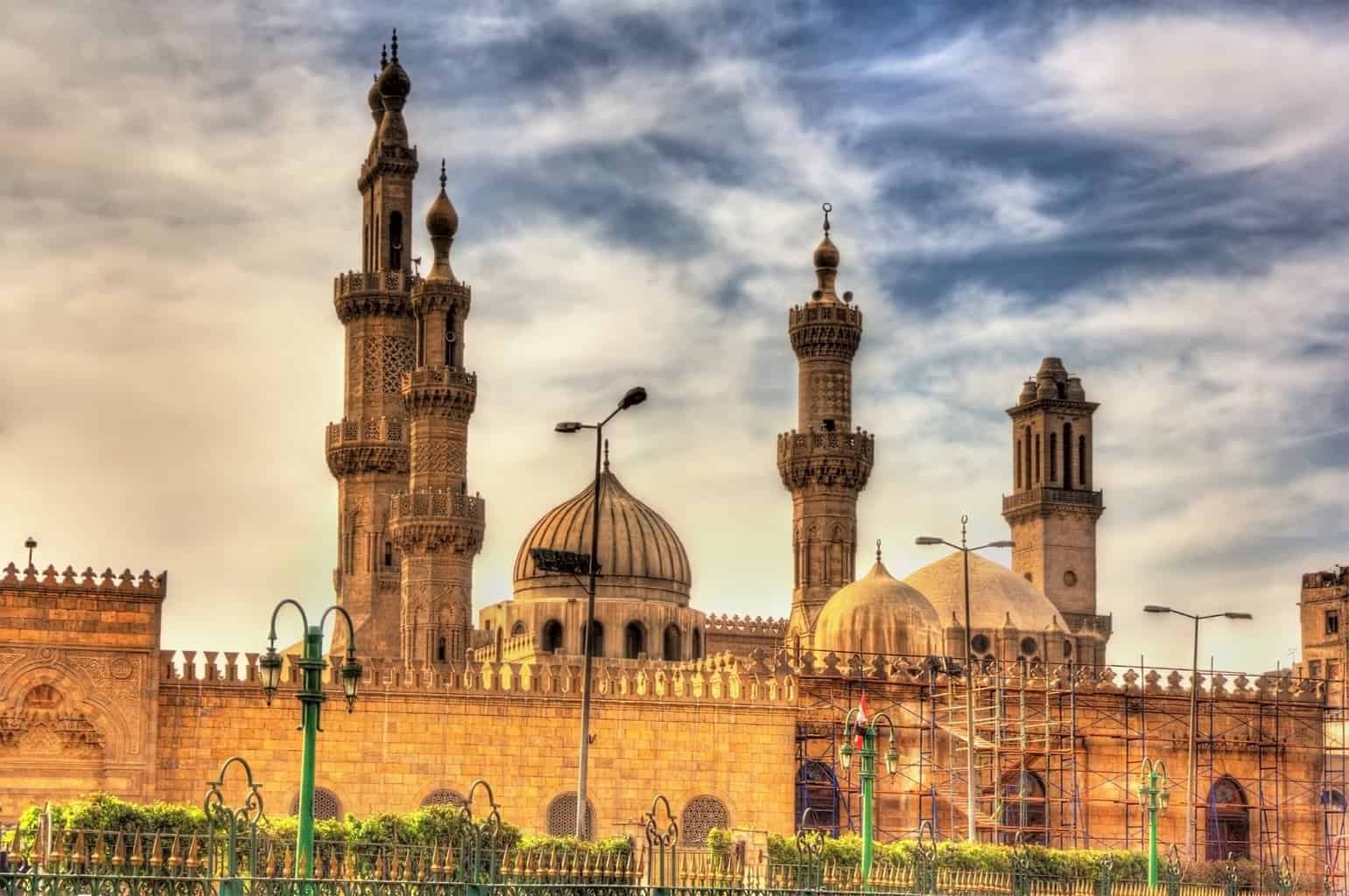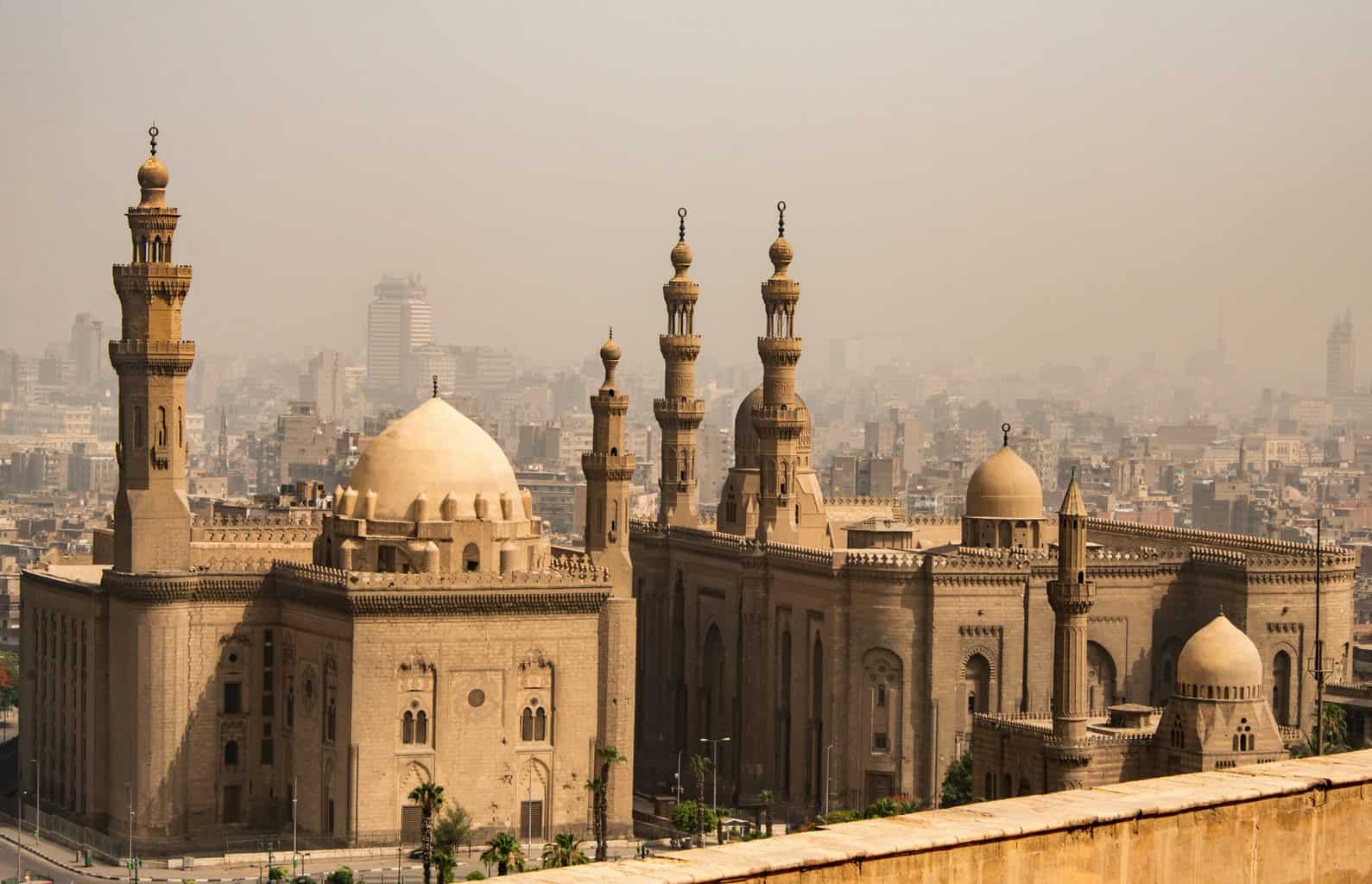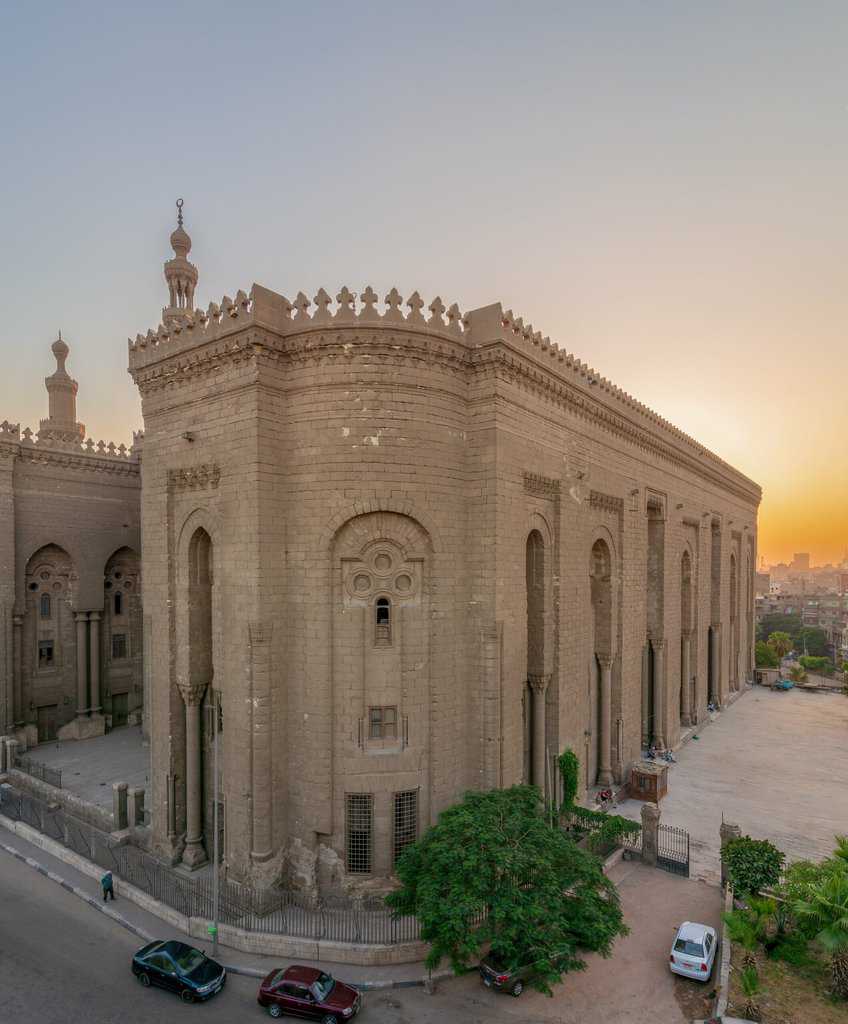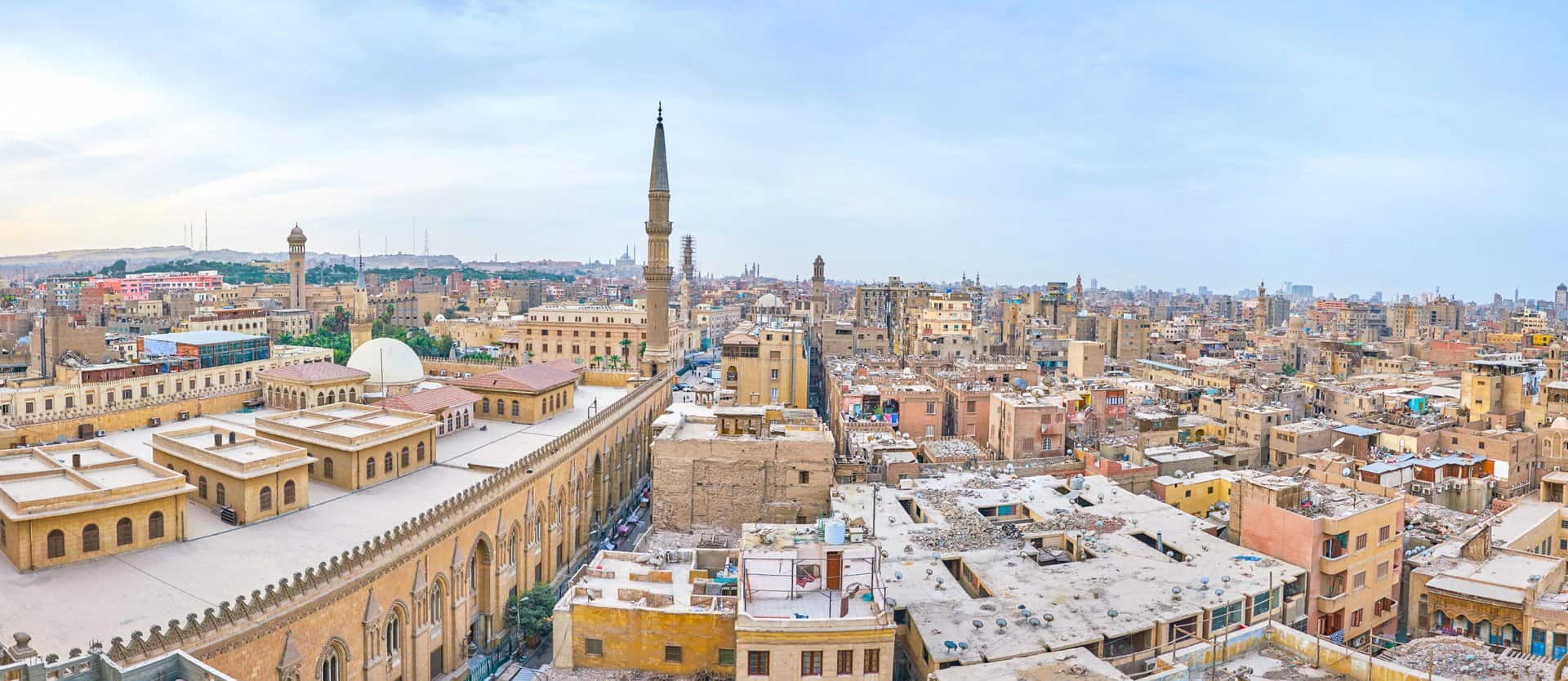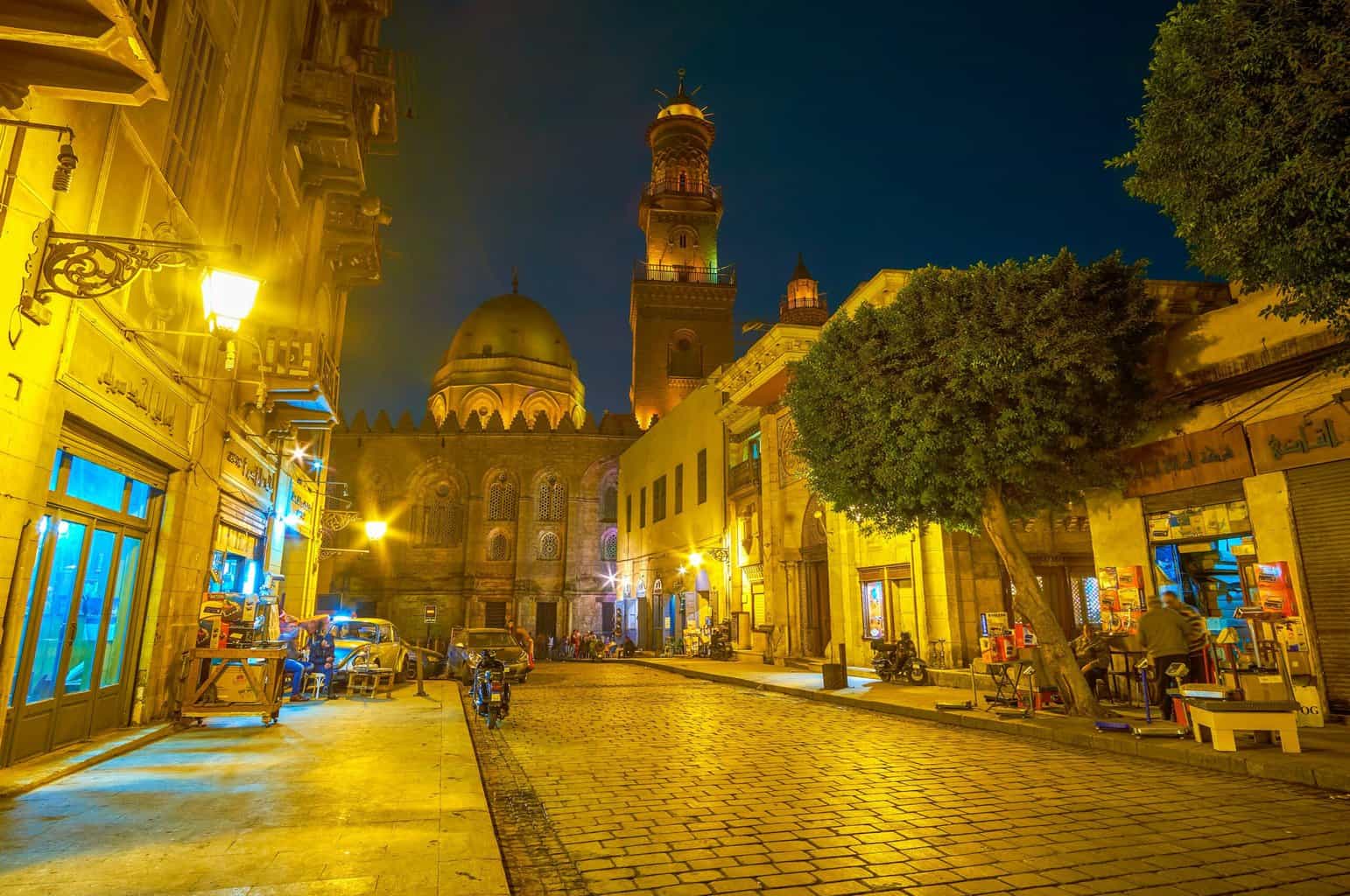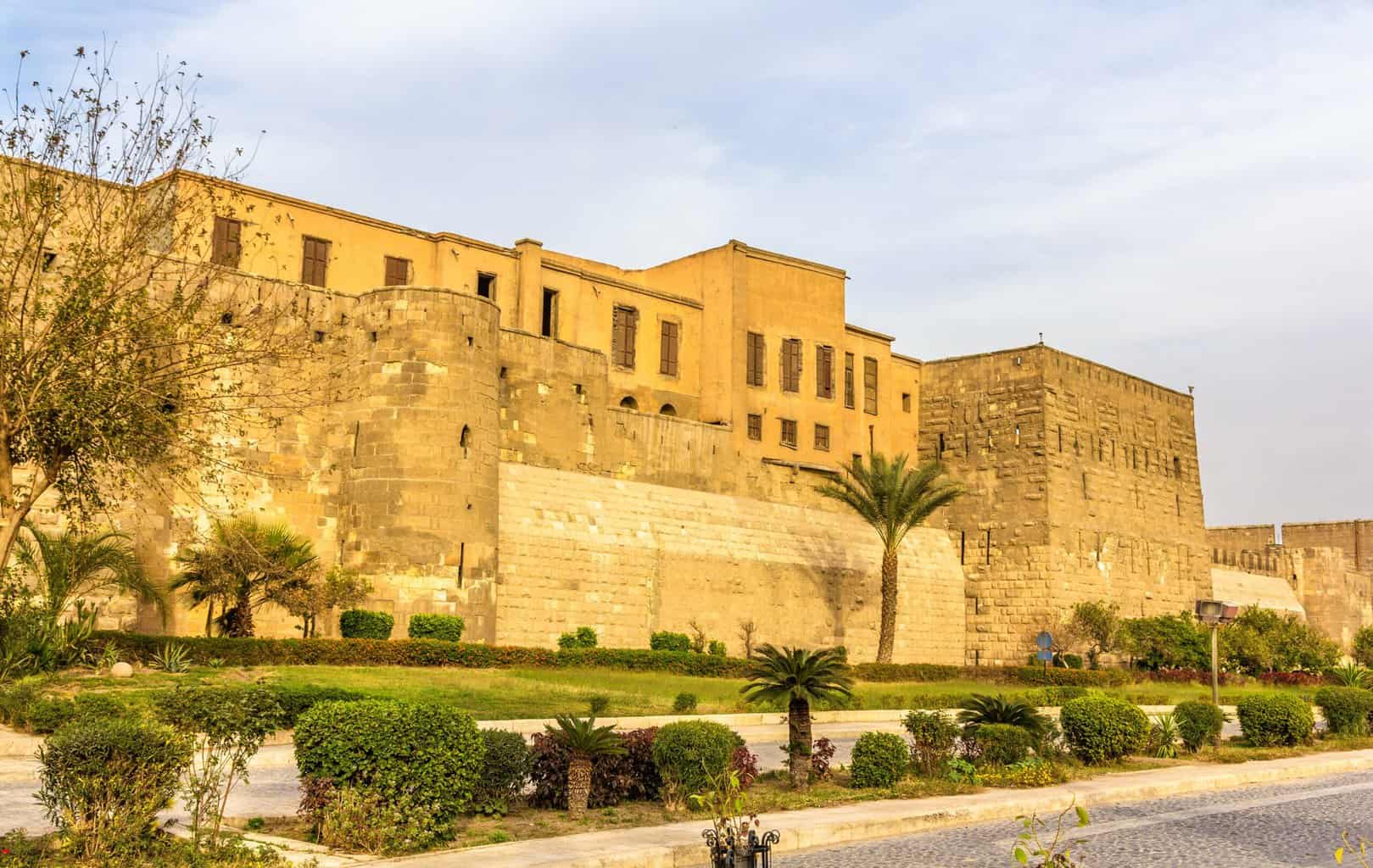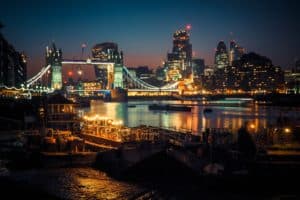Old Cairo: Top 11 Fascinating Landmarks and Locations to Explore

Updated On: November 08, 2023 by Dina Essawy
The oldest section or district in Cairo is described by many names, either Old Cairo, Islamic Cairo, Cairo of Al-Muizz, Historic Cairo, or Medieval Cairo, it mainly refers to the historical areas of Cairo, which existed before the modern expansion of the city during the 19th and 20th centuries, especially the central parts around the old walled city and the Cairo Citadel.
This area includes the largest number of historical architecture in the Islamic world. It also features hundreds of mosques, tombs, madrasas, palaces, memorials, and fortifications dating back to the Islamic era of Egypt.
In 1979, the UNESCO declared “Historic Cairo” a World Cultural Heritage site, as “one of the oldest Islamic cities in the world, with its famous mosques and madrasas, baths and fountains” and “the new center of the Islamic world that has reached its age Golden in the 14th century.”
The Origins of Old Cairo
The history of Cairo begins with the Muslim conquest of Egypt in 641, led by the commander Amr ibn al-Aas. Although Alexandria was the capital of Egypt at the time, the Arab conquerors decided to create a new city called Fustat to serve as the administrative capital and military garrison center for Egypt. The new city was located near Babylon Fortress; a Roman-Byzantine fortress on the shores of the Nile.
Fustat’s location at the intersection of Lower Egypt and Upper Egypt was a strategic place from which to control a country that was centered on the Nile.
The founding of Fustat was also accompanied by the founding of the first mosque in Egypt (and Africa), the Mosque of Amr ibn al-Aas, which was frequently rebuilt over the centuries but still exists today.
Fustat soon grew to become the main city, port, and economic center of Egypt. Consecutive dynasties took over Egypt afterward, including the Umayyads in the 7th century, and the Abbasids in the 8th, each of which added their own distinct touches and constructions that made Cairo or Fustat what it is today.
The Abbasids established a new administrative capital called Al-Askar, a little northeast of Fustat. The city was completed with the founding of a large mosque called Al-Askar Mosque in 786, and it included a palace for the ruler known as Dar Al-Amarah. Although no part of this city survives to this day, the establishment of new administrative capitals outside the main city has become a recurring pattern in the history of the region.
The Abbassids also built Ibn Tulun Mosque in the ninth century, a rare and distinctive example of Abbasid architecture.
After Ibn Tulun and his sons came the Ikhshidids, who ruled as Abbasid rulers between 935 and 969. Some of their establishments, notably during the reign of Abu Al-Musk Al-Kafur who ruled as regent. This possibly affected the choice of the future Fatimids for the location of their capital, since the expansive Kafur gardens along the Sesostris Canal were incorporated into the later Fatimid palaces.
Building a New City
In 969 AD, the Fatimid state invaded Egypt during the reign of Caliph al-Mu’izz, led by General Jawhar al-Siqilli. In 970, al-Muizz ordered Jawhar to build a new city to become the center of power for the Fatimid caliphs. The city was called “Al-Qahera Al-Mu’izziyah”, which gave us the modern name Al-Qahira (Cairo). The city was located northeast of Fustat. The city was organized so that in its center were the great palaces that housed the caliphs and their families and state institutions.
Two main palaces were completed: Sharqiah (the largest of the two palaces) and Gharbiya, and between them is an important square known as “Bain Kasserine” (“Between the Two Palaces”).
Old Cairo’s main mosque, Al-Azhar Mosque, was founded in 972 as the Friday Mosque and as a center of learning and teaching and is today considered one of the oldest universities in the world.
The main street in the city, known today as Al-Muizz li Din Allah Street (or al-Muizz Street), extends from one of the northern city gates (Bab Al-Futuh) to the southern gate (Bab Zuweila) and passes between the palaces.
Under the Fatimids, Cairo was a royal city, closed to the general public and inhabited only by the Caliph’s family, state officials, army regiments, and other people essential to the operations of the city.
With time, Cairo grew to include other local cities, including Fustat. The vizier Badr al-Jamali (in office from 1073-1094) notably rebuilt Cairo’s walls in stone, monumental gates, the remains of which still stand today and were expanded under later Ayyubid rule.
In 1168, when the Crusaders marched on Cairo, the Fatimid vizier Shawar, concerned that the unfortified city of Fustat would be used as a base to besiege Cairo, ordered its evacuation and then set it on fire, but thankfully many of its landmarks still exist today.
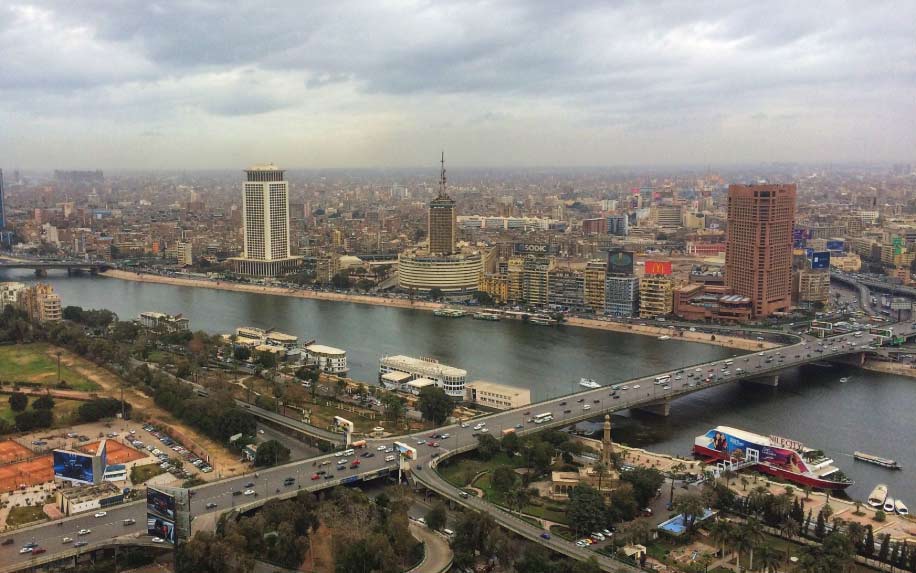
Ahmed Ezzat via Unsplash.
More Development in the Ayyubid and Mamluk Periods
Saladin’s reign marked the beginning of the Ayyubid state, which ruled Egypt and Syria in the 12th and 13th centuries. He proceeded to build an ambitious new fortified citadel (present-day Cairo Citadel) to the south, outside the walled city, which would house Egypt’s rulers and state administration for several centuries afterward.
The Ayyubid sultans and their successors, the Mamluks, gradually demolished and replaced with the major Fatimid palaces their own buildings.
During the reign of the Mamluk Sultan Nasir al-Din Muhammad ibn Qalawun (1293-1341), Cairo reached its zenith in terms of population and wealth. An estimate of the population towards the end of his reign gives a figure close to 500,000, making Cairo the largest city in the world outside of China at the time.
The Mamluks were prolific builders and patrons of religious and civic buildings. A large number of Cairo’s impressive historical monuments date back to their era.
Under the subsequent Ayyubids and Mamluks, al-Muizz Street became a prime location for the construction of religious complexes, royal shrines, and commercial establishments, which were usually occupied by the sultan or members of the ruling class. The main street became full of shops and ran out of space for further development, new commercial buildings were built in the east, near the Al-Azhar Mosque and the tomb of Hussein, where the market area of Khan Al-Khalili is still gradually present.
An important factor in Cairo’s development was the increasing number of “endowment” institutions, especially during the Mamluk period. Endowments were charitable institutions built by the ruling elite, such as mosques, madrasas, mausoleums, sabils. By the late 15th century, Cairo also had high-rise mixed-use buildings (known as ‘rab’e’, ‘khan’ or ‘wakalah’, depending on the exact function) where the two lower floors were usually for commercial and storage purposes and the multiple floors above them were leased to tenants.
During Ottoman rule which began in the 16th century, Cairo continued to be a major economic center and one of the most important cities in the region. Cairo continued to develop and new neighborhoods grew outside the old city walls. Many of the old bourgeois or aristocratic mansions that have been preserved in Cairo today date back to the Ottoman era, as do a number of the sabil-kuttab (a combination of a water distribution booth and a school).
Then came Muhammad Ali Pasha who truly transformed the country and Cairo as the capital of an independent empire that lasted from 1805 to 1882. Under the rule of Muhammad Ali Pasha, the Cairo Citadel was completely renovated. Many of the abandoned Mamluk monuments were demolished to make way for his new mosque (Mohammed Ali Mosque) and other palaces.
The Muhammad Ali dynasty also introduced the Ottoman architectural style more rigorously, especially in the late “Ottoman Baroque” period of the time. One of his grandsons, Ismail, who was Khedive between 1864 and 1879, oversaw the construction of the modern Suez Canal. Alongside this project, he also undertook the construction of a spacious new European-style city to the north and west of the historic center of Cairo.
The new town designed by French architect Haussmann in the 19th century mimics the reforms undertaken in Paris, with grand boulevards and squares as part of its planning. Although not fully completed within Ismail’s vision, this new city makes up much of downtown Cairo today. This left the old historic neighborhoods of Cairo, including the Walled City, relatively neglected. Even the castle lost its status as the royal residence when Ismail moved to Abdeen Palace in 1874.
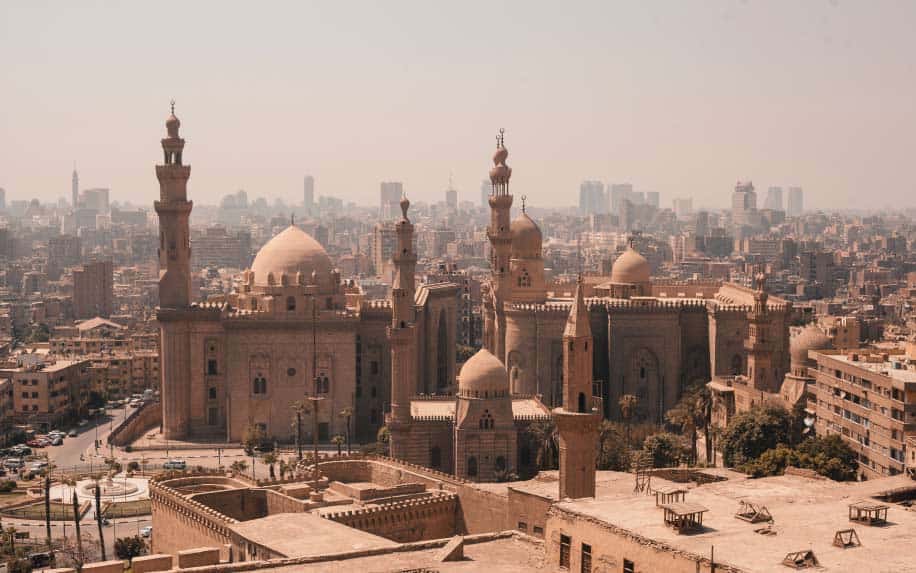
Omar Elsharawy via Unsplash
Historic Sites and Landmarks in Old Cairo
Mosques
Ibn Tulun Mosque
The Mosque of Ibn Tulun is the oldest in Africa. It is also the largest mosque in Cairo at 26,318 m2. It is the only remaining landmark from the capital of the Tulunid state in Egypt (the City of Qata’i) that was established in 870.
Ahmed Ibn Tulun was a Turkish military commander who served the Abbasid caliphs in Samarra during a prolonged crisis of Abbasid power. He became ruler of Egypt in 868 but soon became its “de facto” independent ruler, while still recognizing the symbolic authority of the Abbasid caliph.
His influence grew so much that the caliph was later allowed to take control of Syria in 878. During this period of Tulunid rule (during the reign of Ibn Tulun and his sons), Egypt became an independent country for the first time since Roman rule was established in 30 BC.
Ibn Tulun established his new administrative capital in 870 and called it al-Qata’i, northwest of the city of Al-Askar. It included a large new palace (still called “Dar al-Amara”), a hippodrome or military parade, amenities such as a hospital, and a large mosque still standing to this day, known as the Mosque of Ibn Tulun.
The mosque was built between 876 and 879. Ibn Tulun died in 884 and his sons ruled for a few more decades until 905 when the Abbasids sent an army to retake direct control and burned the city to the ground, and only the mosque remained.
Ibn Tulun Mosque was built based on the designs of the Egyptian architect Saiid Ibn Kateb Al-Farghany, who also designed the Nilometer, in the Samarran style. Ibn Tulun requested that the mosque be built on a hill so that if “Egypt were to be flooded, it would not be submerged, and if Egypt were to be burned, it would not burn”, so it was built on a hill called the Hill of Thanksgiving (Gabal Yashkur), which is said to be where Noah’s Ark docked after the flooding abated, and also where God spoke to Moses and where Moses confronted the Pharaoh’s magicians. So, it was believed that this hill is where prayers are answered.
The mosque used to be attached to Ibn Tulun’s palace and a door was built allowing him to enter the mosque privately and directly from his residence.
Between the walls surrounding the mosque and the mosque itself are empty spaces called zeyada that serve the purpose of keeping out the noise. It is also reported that the space was rented to sellers who would sell their products to people exiting the mosque after prayers.
The mosque is built around a courtyard, in the middle of which is an ablutions fountain, added in 1296. The interior ceiling of the mosque is made of sycamore wood. The mosque’s minaret has a spiral staircase around the outside that extends up to the tower at 170 feet.
The mosque’s unique structure motivated international directors to use it as a backdrop to several of their films, including the James Bond installment The Spy Who Loved Me.
Two of the oldest and best-preserved homes still exist right next to the mosque, including the Bayt al-Kritliyya and the Beit Amna bint Salim, that were built a century apart as two separate houses that were attached together by a bridge at the third-floor level, combining them into a single home. The house has been transformed into the Gayer-Anderson Museum after the British general R.G. John Gayer-Anderson, who lived there until WWII.
Amr Ibn Al-Aas Mosque
Amr Ibn Al-Aas Mosque was built in the year 21 AH and it is the second mosque built in Egypt and the largest in Africa.
According to tradition, the location of this grand mosque was chosen by a bird. Amr ibn al-As, the Arab general that conquered Egypt from the Romans, set up his tent on the eastern side of the Nile, and before he set off to battle, a dove laid an egg in his tent, so he declared the site sacred, and built the mosque in the same location.
The mosque walls were built with mud bricks and its floor with gravel, its roof made of plaster, and its columns were made up of trunks of palm trees and then through years, the ceiling was raised and the palm tree trunks were replaced with marble columns and so on.
Over the years and as new rulers came to Egypt, the mosque was developed and four minarets were added, and its area doubled and tripled in size.
Al-Azhar Mosque
One of the most important institutions founded in the Fatimid era is Al-Azhar Mosque, founded in 970 AD, which rivals Fez for the title of the oldest university in the world. Today, Al-Azhar University is the premier center for Islamic education in the world and one of the largest Egyptian universities with branches throughout the country. The mosque itself retains important Fatimid elements but was developed and expanded over the centuries, notably by the Mamluk sultans Qaytbay, Qansuh al-Ghuri, and Abd al-Rahman Katkhuda in the eighteenth century.
Mosque and Madrasa of Sultan Hassan
The Mosque and Madrasa of Sultan Al-Nasir Hassan is one of the famous ancient mosques in Cairo. It is described as the jewel of Islamic architecture in the East and represents an important stage in Mamluk architecture. It was established by Sultan Al-Nasir Hassan bin Al-Nasir Muhammad bin Qalawun during the period from 1356 AD to 1363 AD during the era of the Bahari Mamluks of Egypt. The building consists of a mosque and a school for the four schools of Islam (Shafi’i, Hanafi, Maliki, and Hanbali), in which the interpretation of the Quran and the Prophet’s hadith were taught. It also contained two libraries.
The mosque is currently located in Salah al-Din Square (Rmaya Square) in the Khalifa neighborhood of the southern region of Old Cairo, and next to it are several ancient mosques, including Al-Rifai Mosque, Al-Nasir Qalawun Mosque and Muhammad Ali Mosque in the Salah Al-Din Castle, and also the Mustafa Kamel Museum.
Other surviving mosques from the Fatimid era include Al-Hakim Mosque, Al-Aqmar Mosque, Juweshi Mosque, and Al-Salih Tala`a Mosque.
Al-Rifai Mosque
Al-Rifai Mosque was built by Khoshyar Hanim, the mother of Khedive Ismail, in the year 1869, and she entrusted Hussein Pasha Fahmy with the implementation of the project. After her death, however, the construction was suspended for about 25 years until the reign of Khedive Abbas Hilmi II in 1905 who assigned Ahmed Khairy Pasha to complete the mosque. In 1912, the mosque was finally opened to the public.
Today, the mosque houses the tombs of the two Sheikhs Sheikh Ali Abu Shubbak al-Rifai, whom the mosque was named after, and Yahya Al-Ansari, as well as the tombs of the royal family, including Khedive Ismail and his mother Khoshyar Hanim, the founder of the mosque, as well as the wives and children of Khedive Ismail, and Sultan Hussein Kamel and his wife, in addition to King Fuad I, and his son and heir King Farouk I.
The mosque is located in Salah El-Din Square in Al-Khalifa neighborhood of Cairo.
Al Hussein Mosque
The mosque was built in 1154 under the supervision of Al-Salih Tala’I, a minister in the Fatimid era. It includes 3 doors made of white marble, one of which overlooks Khan Al-Khalili and another is next to the dome, and is known as the Green Gate.
The building includes five rows of arches carried on marble columns and its mihrab was built of small pieces of colored faience instead of marble. Next to it is a pulpit made of wood, adjacent to two doors leading to the dome. The mosque is made of red stone and is designed in the Gothic style. Its minaret, which is located in the western tribal corner, was built in the style of Ottoman minarets, which are cylindrical.
The mosque is one of the main attractions in the area of Khan El Khalili, a market district that is one of the main tourist attractions in Cairo.
Historical Complexes
Sultan Al-Ghouri Complex
The Sultan Al-Ghouri Complex is a famous archaeological complex in Cairo built in the Islamic style dating back to the late Mamluk era. The complex includes several facilities built on two opposite sides, between them is a corridor topped by a wooden ceiling. On one side are a mosque and a school, while on the other side is a mausoleum dome, a sabil with a school, and a house on the upper floor. The complex was established during the period from 1503 to 1504 by order of Sultan Al-Ashraf Abu Al-Nasr Qansuh of Bibardi Al-Ghouri, one of the rulers of the Mamluk state.
The complex is currently located in the Ghouria in Al-Darb Al-Ahmar area of the central Cairo district, overlooking Al-Muizz Lidin Allah Street. Next to it are several other archaeological sites, such as Wakala al-Ghouri, Wekalet Qaitbay, Muhammad Bey Abu al-Dhahab Mosque, Al-Azhar Mosque, and Fakhani Mosque.
The Religious Complex
The Religious Complex is located near the ancient fortress of Babylon and includes the Mosque of Amr Ibn Al-Aas, the Hanging Church, the Jewish Temple of Ibn Azra, and several other churches and holy sites.
The complex’s history dates back to ancient Egypt when it was called Ghary Aha (the place where the fighting continues) and it was next to the temple of the god Osir that was destroyed, and then the Babylon Fort was built until the Islamic leader Amr Ibn Al-Aas conquered Egypt and built the city of Fustat and his mosque, the Al-Ateeq Mosque.
The Religious Complex is a great attraction for religious tourism and also for tourists and visitors interested in religious history or history in general.
Al-Muizz Street
Al-Muizz Street is in the heart of old Cairo and is considered an open museum of Islamic architecture and antiquities. With the emergence of the city of Cairo during the era of the Fatimid state in Egypt, Al-Muizz Street extended from Bab Zuweila in the south to Bab Al-Futuh in the north. With the transformation that old Cairo witnessed at the beginning of the 13th century during the era of the Mamluk state, it became a center of economic activities in this era.
Among the notable landmarks that are located along Al-Muizz Street is the Mosque of Al-Hakim bi Amr Allah, Mosque of Sulayman Agha al-Silahdar, Bayt al-Suhaymi, Sabil-Kuttab of Abdel Rahman Katkhuda, Qasr Bashtak, Hammam of Sultan Inal, Madrasa of Al-Kamil Ayyub, Complex of Qalawun, Madrasa of Al-Salih Ayyub, Madrasa of Sultan Al-Ghuri, Mausoleum of Sultan Al-Ghuri, and so much more.
Castles and Citadels
Saladin Citadel
The Citadel of Cairo (Saladin Citadel) was built on the Mokattam hills, so it overlooks the entire city. It is one of the most impressive military fortifications of its time due to its location and structure. The citadel has four gates, the Citadel gate, El-Mokatam gate, the Middle Gate, and the New Gate, in addition to thirteen towers and four palaces, including Palace Ablaq and Al-Gawhara Palace.
The complex is divided into two main sections; the Northern Enclosure that was usually employed by military personnel (where you can now find the Military Museum), and the Southern Enclosure that was the residence of the sultan (now houses the Mosque of Muhammad Ali Pasha).
A famous vantage point for tourists at the Citadel of Saladin is the watchtower, where you can see all of Cairo from high above.
Mohamed Ali Palace
The Manial Palace was built by and for Prince Mohammed Ali Tewfik, the uncle of the last King of Egypt, King Farouk I, on an area of 61,711 m².
The palace complex is made up of five buildings, including residence palaces, reception palaces, and throne palaces. All of this is surrounded by Persian gardens within an outer wall resembling medieval forts. The buildings also include a reception hall, clock tower, a Sabil, a mosque, and a hunting museum, which was added in 1963, as well as a throne palace, a private museum, and the golden hall.
The Reception Palace is decked with exquisite tiles, chandeliers, and beautifully decorated ceilings. The Reception Hall contains rare antiques, including carpets, and furniture. The Residential Palace contains one of the most exquisite pieces; a bed made out of 850 Kgs of pure silver that belonged to the Prince’s mother. This main palace consists of two floors, the first of which includes the fountain foyer, the haramlik, the mirror room, the blue salon room, the dining room, the seashell salon room, the fireplace room, and the Prince’s office.
The Throne Palace, where the Prince received his guests, also has two floors; the first has the Throne Hall, with a ceiling covered with a sun disk with golden rays reaching out to the four corners of the room. On the upper floor, you’ll find the Aubusson Chamber, a rare room because all its walls are covered with French Aubusson.
The mosque attached to the Palace is decorated with blue ceramic tiles created by the Armenian ceramist David Ohannessian. A Clock Tower between the Reception Hall and the Mosque is a mix of styles such as Andalusian and Moroccan.
The Palace’s overall design mixes between different architectural styles, such as European Art Nouveau, Islamic, Rococo and many more.
Old Cairo has a wealth of history, which explains the abundance of landmarks and monuments from different historical eras spread across the district, attracting tourists and visitors to admire their beautiful architecture and learn more about the history of such a unique district.
If you’re planning a trip to Cairo, be sure to check out our guide to the Downtown District.


